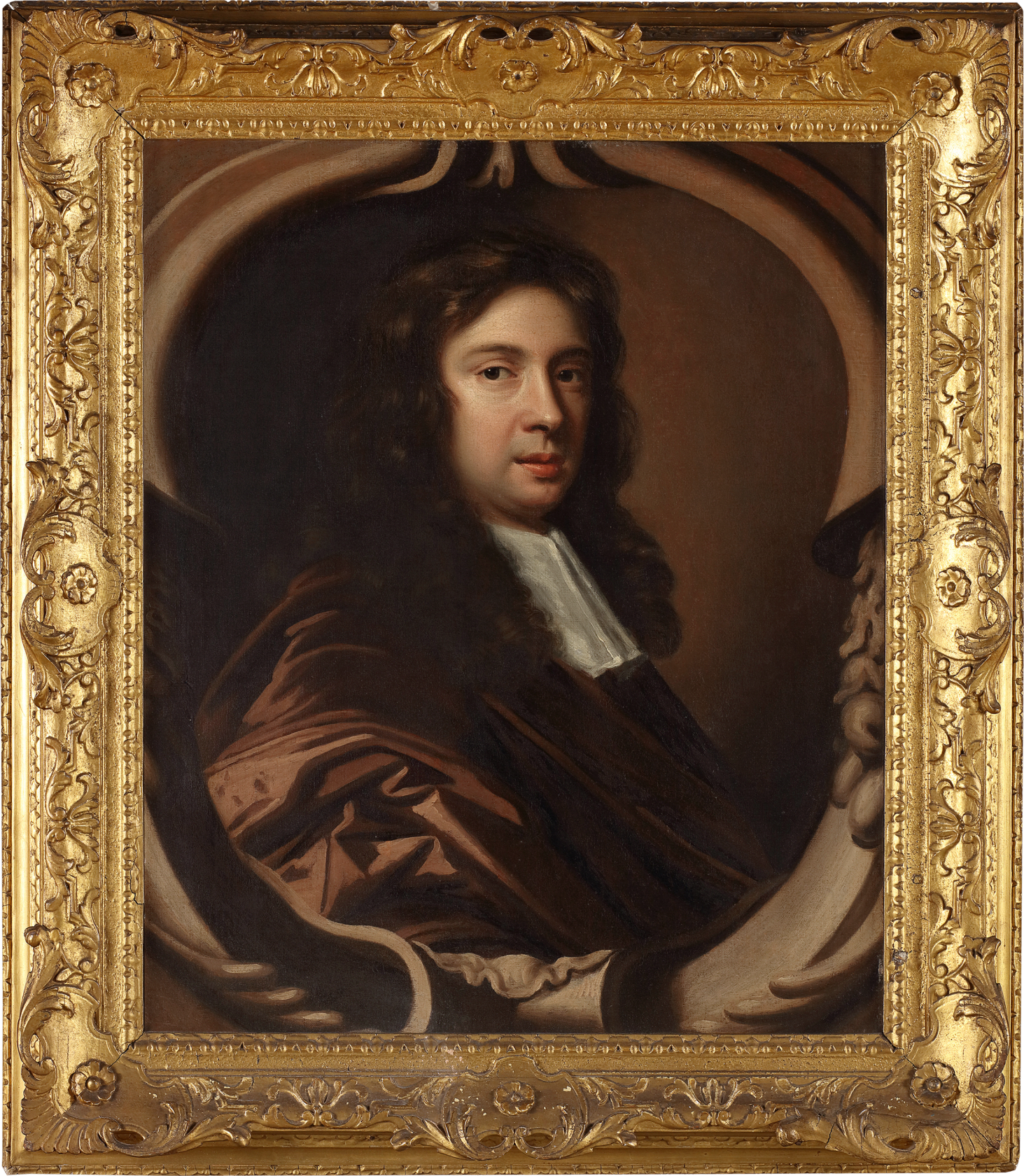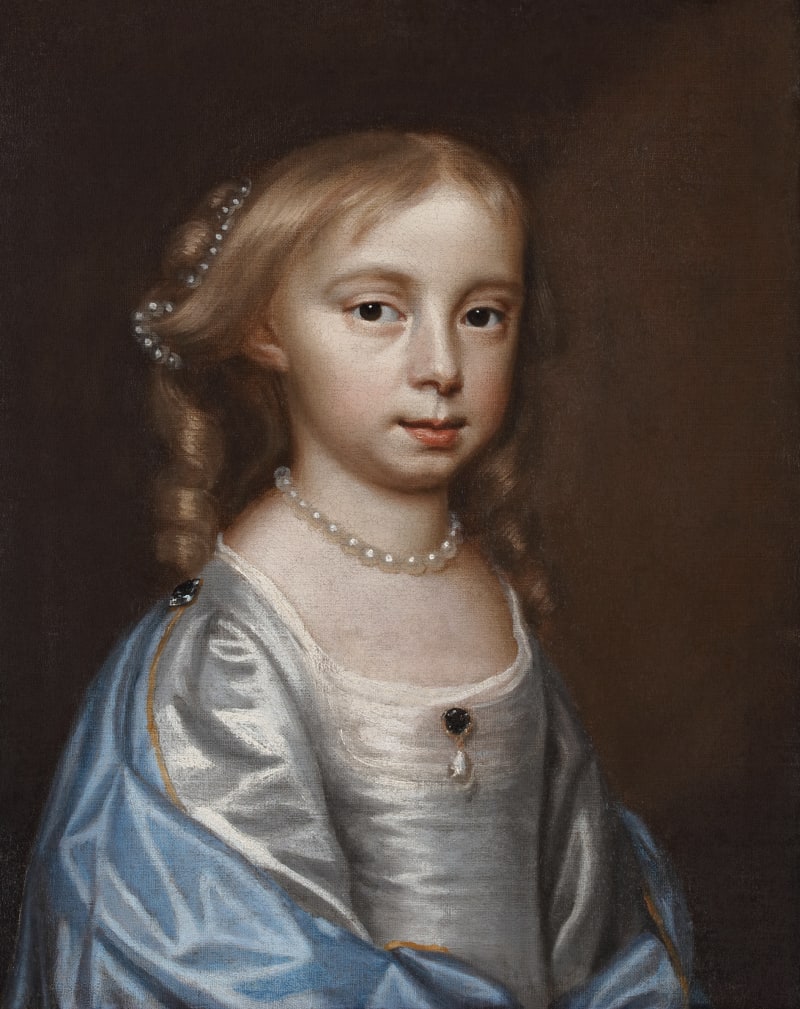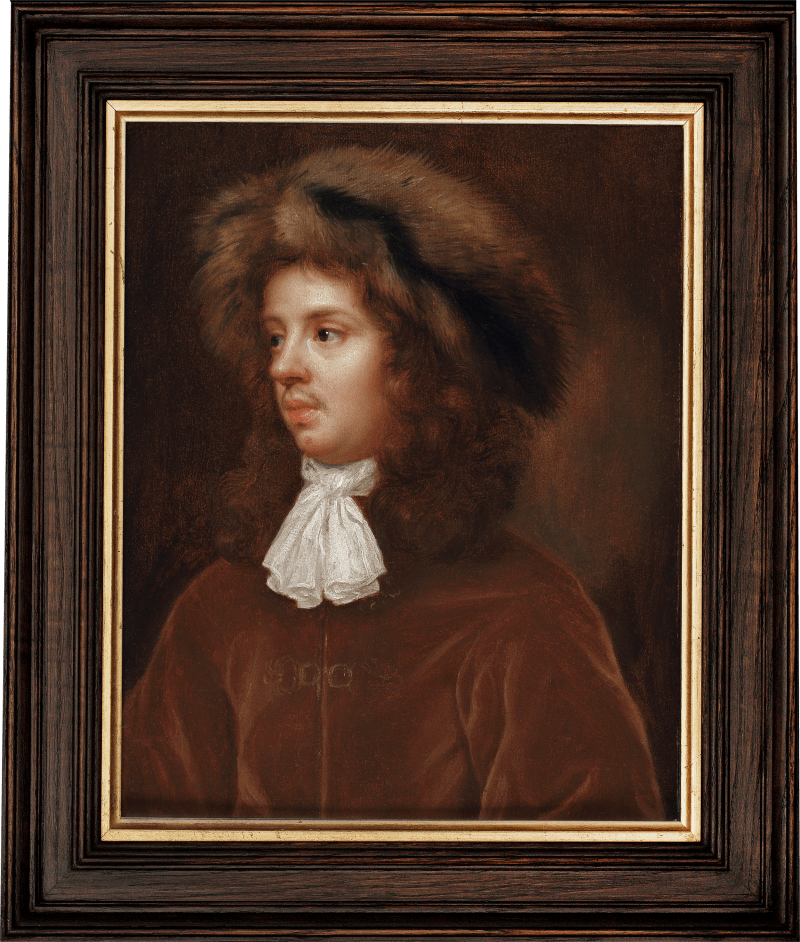This previously unidentified portrait depicts the artist’s husband, Charles. It shares a striking resemblance with a portrait of circa 1680, from which the head type for the present portrait probably derives, making a compelling case for its identification.
Throughout her career, Beale depicted her husband in various guises, with this depiction being notably the most formal. Here, Charles is portrayed in a conventional pose, turned gently towards the viewer, dressed in a white falling band and fashionable curls against a backdrop of richly executed brown drapery. The unusually formal composition, which employs the oval surround simulating carved stonework found in many of her portraits ‘for profit’, suggests that it may have been intended as a finished work, perhaps even ‘for friends & on account of kindness’ rather than simply ‘for study and improvement’. Other instances of Beale’s inclusion of a decorative oval in her family portraits include a possible portrait of her son, Bartholomew, also painted circa 1680.
The...
This previously unidentified portrait depicts the artist’s husband, Charles. It shares a striking resemblance with a portrait of circa 1680, from which the head type for the present portrait probably derives, making a compelling case for its identification.
Throughout her career, Beale depicted her husband in various guises, with this depiction being notably the most formal. Here, Charles is portrayed in a conventional pose, turned gently towards the viewer, dressed in a white falling band and fashionable curls against a backdrop of richly executed brown drapery. The unusually formal composition, which employs the oval surround simulating carved stonework found in many of her portraits ‘for profit’, suggests that it may have been intended as a finished work, perhaps even ‘for friends & on account of kindness’ rather than simply ‘for study and improvement’. Other instances of Beale’s inclusion of a decorative oval in her family portraits include a possible portrait of her son, Bartholomew, also painted circa 1680.
The elaborate ‘described oval’ developed as a means of formalizing bust-length portraiture and became a popular device used throughout the Baroque period. It was deployed by artists such as Beale’s friend and contemporary Sir Peter Lely, as the possibilities of trompe l’oeil reached new heights during the seventeenth century. The oval seen here evolved to give the impression of the sitter gazing at the viewer through a window. It was Beale’s children who were often tasked with painting these decorative motifs, one of whom may well have painted the present oval as they are known to have been working in their mother’s studio since at least 1676.[1] Both sons were paid for their work, and Charles Beale’s notebooks meticulously recorded each payment – his notebooks from 1676/7 and 1680/1 indicate that they were paid per painting as opposed to an hourly or daily rate.[2] Beale employed this oval so frequently that it has become associated with her vernacular style. Indeed, in some instances portraits with this decorative device by other artists of the period have been erroneously attributed to her in subsequent generations.
[1] See Beale ‘Notebook 1676/7’.
[2] Ibid..













